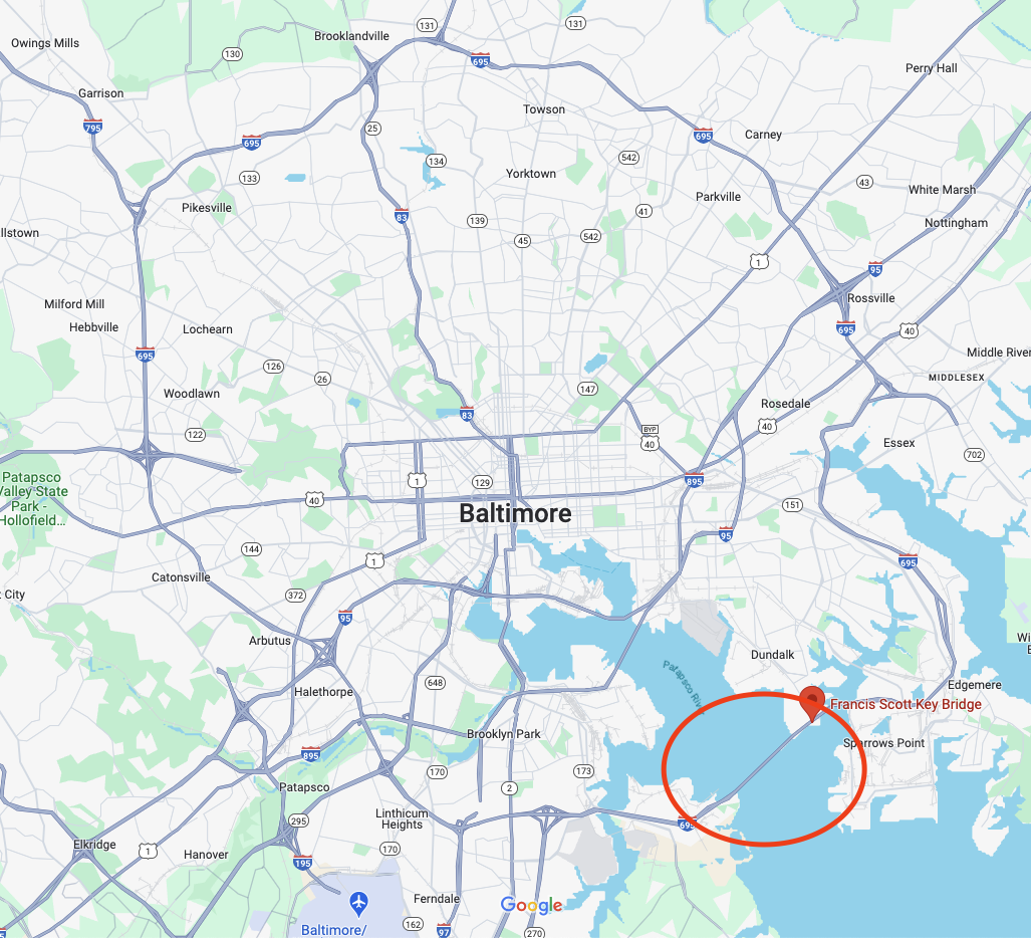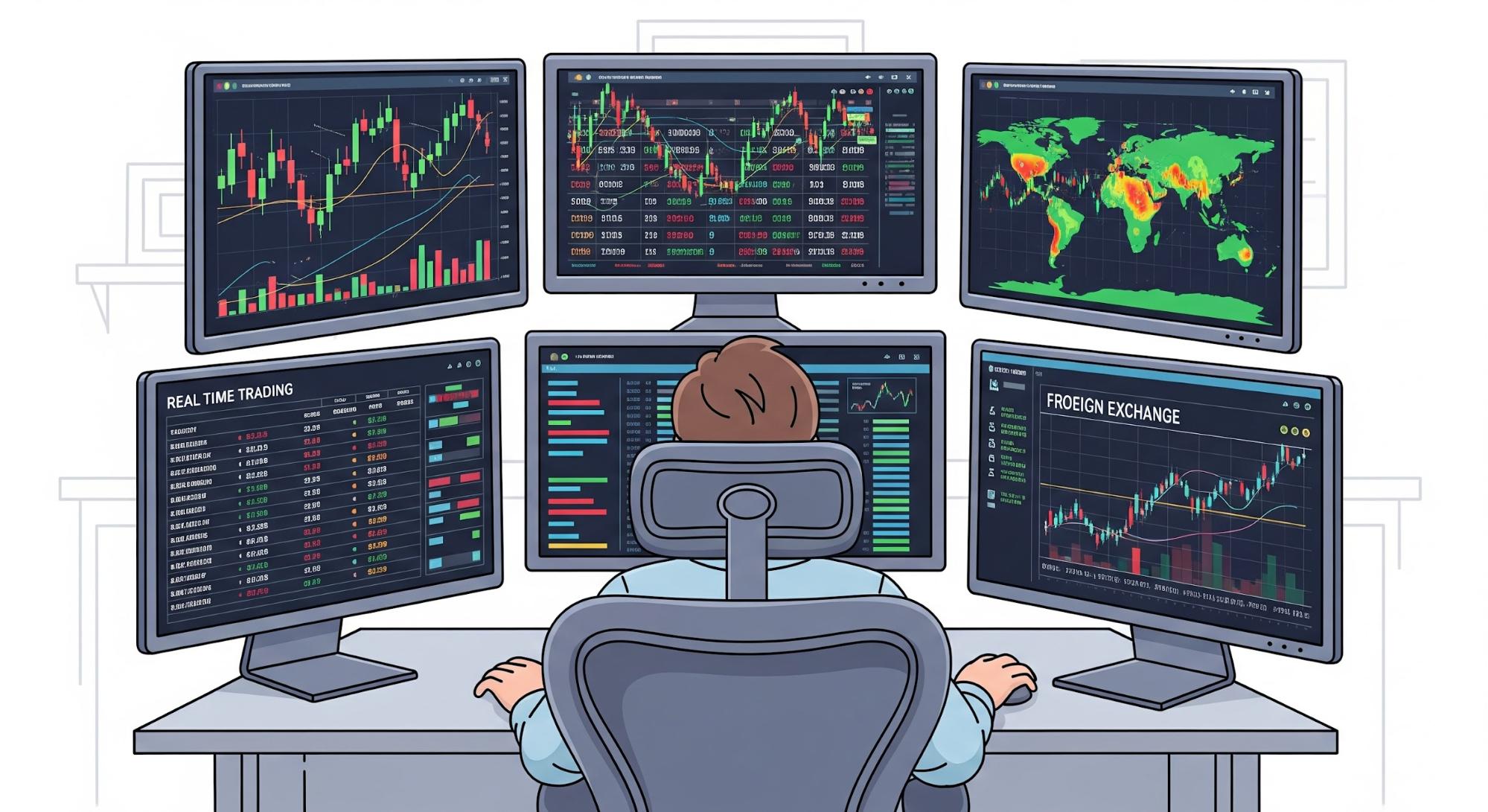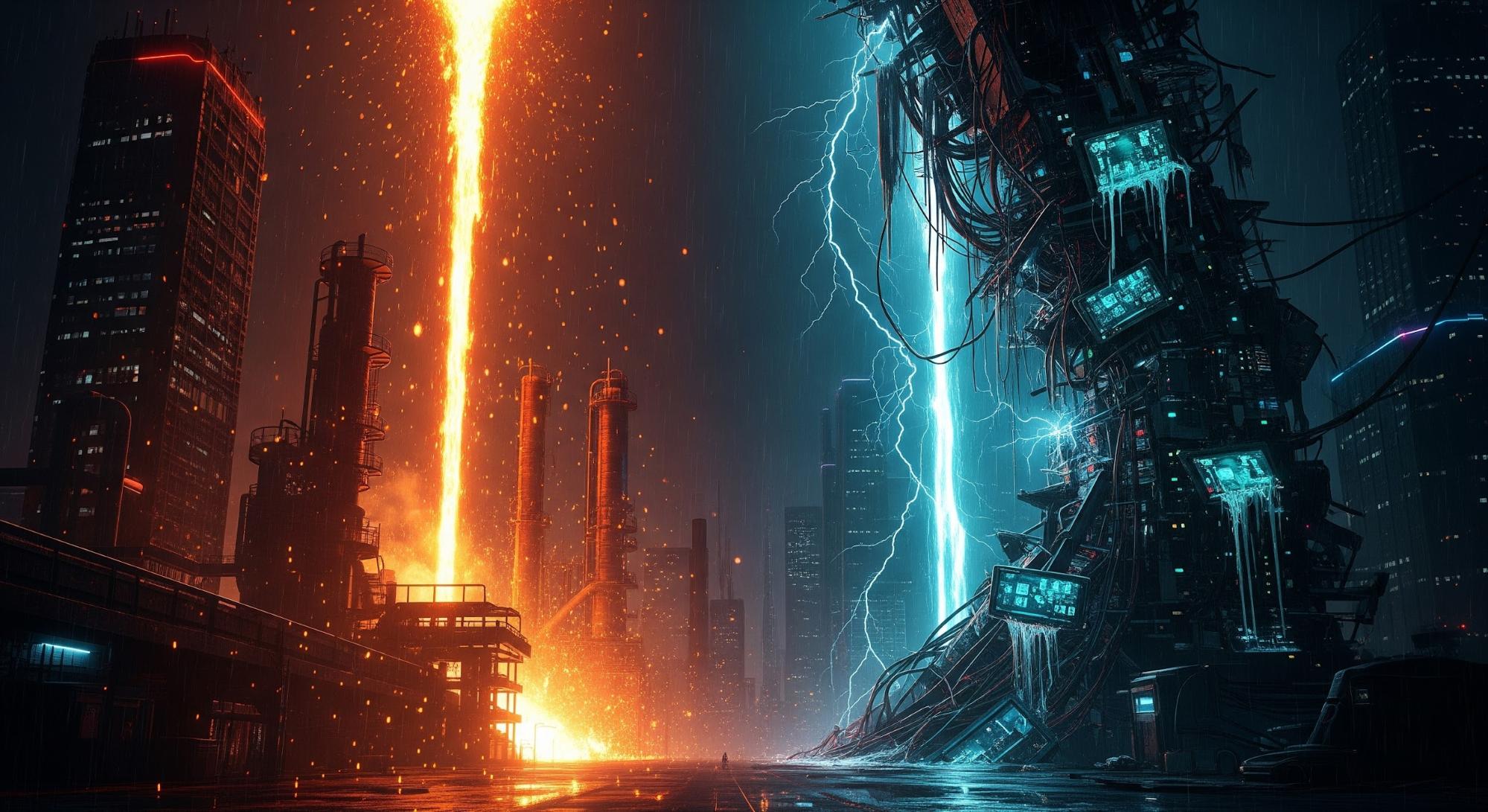
Posted March 26, 2024
By Sean Ring
Key Bridge Collapse
“How could that plane possibly have hit that building?” I asked myself as I watched the aftermath of the 9/11 attack.
I was flabbergasted at my desk on the trading floor in London. Then, the second plane crashed into the towers. Clearly, this was a terrorist attack.
I was so confused at first because I had flown from Newark to London a half-dozen times by September 2001. The sky is wide open over NYC. You’d have to try to hit the Trade Center; it wouldn’t be an accident.
That second explosion confirmed my hypothesis.
Baltimore Bridge is Falling Down
All these feelings rushed back to me this morning as I watched a video of the Dali, a boat registered in Singapore, smashing into the Francis Scott Key Bridge in Baltimore at 1:27 a.m. ET.
I was sitting at Fabrizio’s, drinking my morning Americano thinking, “How could that ship possibly have hit that bridge?”
Interestingly, the Dali hit the bridge on its way out of Baltimore to Colombo, Sri Lanka, not on its way in. I assume the ship successfully navigated its way upstream.
Once I found that out, I did a bit of digging.
Why is the Key Bridge Important?
I don’t want to be an alarmist. And I have absolutely no proof of anything.
But what if this was one step in an intricate terrorist attack?
I ask only because I find it difficult to believe that the helmsman accidentally steered his ship into the bridge.
 Credit: Google Maps
Credit: Google Maps
The interesting thing about the Key Bridge is that it’s the bridge you take when you want to avoid the city center. That means now that this bridge is taken out, you’re forced to drive through Baltimore proper.
If you’ve seen the movie The Sum of All Fears, you may be getting a small frisson running up your spine.
Operational Reasons to Hit the Key Bridge
The bridge is part of the Baltimore Beltway (Interstate 695), connecting the eastern and western parts of the Baltimore metropolitan area. This makes it a crucial route for daily commuters and for maintaining local traffic flow, helping to alleviate congestion in the downtown areas.
The bridge supports the local and regional economy by facilitating the movement of goods and services. It's an essential route for commercial vehicles, connecting various parts of Maryland and beyond, thus playing a vital role in the logistics and supply chain networks.
By targeting this major transportation link, terrorists might aim to disrupt economic activities, causing not just immediate damage but also long-term economic impacts. The bridge is crucial for the movement of goods and services, and its incapacitation could lead to significant supply chain disruptions, affecting both local and national economies.
The bridge is strategically located near the Port of Baltimore, one of the major ports in the United States, which handles a significant amount of cargo every year. By providing direct access to the port, the bridge helps efficiently transport goods to and from the port, underpinning its role in international trade and commerce.
Given its importance to the region's transportation network and its proximity to the Port of Baltimore, the Francis Scott Key Bridge represents a strategic point. Disrupting access to the port could have significant implications for trade and national security, making it a potentially attractive target for those wishing to impact the U.S. strategically.
In scenarios that require rapid deployment or mobilization (such as national security events or natural disasters), the bridge's role in facilitating quick movement across the bay becomes even more critical. It can serve as a key route for emergency services, military personnel, and equipment.
Named after the author of the United States national anthem, the bridge also carries cultural and historical value. This symbolic importance can translate into a strategic consideration, particularly in maintaining and protecting the infrastructure that holds a place in national identity.
High-profile targets like major bridges often attract extensive media coverage, which can amplify an attack's psychological impact, spreading fear and uncertainty among the public. Terrorists often seek this kind of widespread attention to further their goals or spread their message.
Let’s Get Real
I hope you can write me in a few weeks to say, “Gee, Seanie, you jumped the shark on that one!”
Or, “Next time, look before you leap.” Or, even, “Way off on that one, Seanie!”
But my job is also to anticipate what may come.
Taking out a major artery the US military uses to mobilize its assets tells me that the game may be afoot.
That said, it may be just a drunken sailor misreading his instruments in the dead of night.
Wrap Up
A Singapore-flagging ship making its way from Baltimore to Colombo hit and destroyed the Key Bridge. Though we don’t know for sure yet, many lives were lost. But since it was so early in the morning, it could’ve been much worse.
Let’s pray for the victims and also spare a thought for the authorities. Either way, they need to be sure whether it was an accident or an attack.
The Chinese say, “May you live in interesting times.”
But they say it ironically.

¡Seremos Bienvenidos Como Libertadores!
Posted January 06, 2026
By Sean Ring

Empire At Gunpoint
Posted January 05, 2026
By Sean Ring

It's Been a Metals Year... and a Pick!
Posted January 02, 2026
By Sean Ring

The U.S. Equity Indices and What They Mean
Posted December 30, 2025
By Sean Ring

The Shape of Things to Come
Posted December 29, 2025
By Jim Rickards

